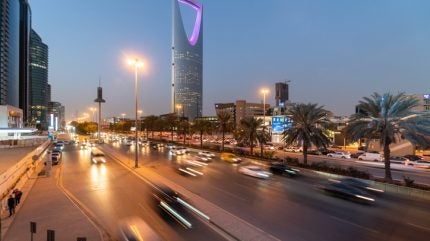
Saudi Arabia attracted SR119bn ($31.7bn) in foreign direct investment (FDI) inflows in 2024, marking a 24% increase from the previous year. This updated data from Saudi Arabia’s General Authority for Statistics (Gastat) reveals a revised figure that is 37% higher than the initial estimate, according to Bloomberg, and signals renewed investor interest, even as inflows remain short of the government’s $100bn annual target for 2030.
Analysts view this revision as a turning point in investor sentiment.

Discover B2B Marketing That Performs
Combine business intelligence and editorial excellence to reach engaged professionals across 36 leading media platforms.
“This shows that inflows are no longer tentative but part of a sustained trend, marking one of the kingdom’s strongest years on record,” said Hamzeh Jalal B Al-Gaaod, Mena analyst at TS Lombard.
Sector focus
The manufacturing sector led FDI inflows with SR35bn ($9.3bn), accounting for 29% of the total. This was followed by wholesale and retail trade (including vehicle repair) and construction, each accounting for 15% of the share at SR18bn. Financial and insurance services also represented a significant share, totalling approximately SR14bn (12%). This distribution aligns with Riyadh’s efforts to expand industrial capacity, strengthen supply chains and deepen financial services as part of its Vision 2030 diversification programme.
Source markets
The UAE remained Saudi Arabia’s top source of FDI for the fourth consecutive year. Inflows from the US and Germany more than tripled compared to 2023, while Hong Kong’s contribution surged to $2bn, marking a tenfold increase year-on-year. In contrast, investments from France and Spain declined.
Outflows ease
Saudi outbound investment declined sharply in 2024, falling 74% year-on-year, according to Gastat. The decline indicates that foreign investors are more willing to commit capital locally.

US Tariffs are shifting - will you react or anticipate?
Don’t let policy changes catch you off guard. Stay proactive with real-time data and expert analysis.
By GlobalData“The breadth of capital sources highlights the global reach of Saudi’s reforms, and the sharp fall in outflows shows investors are choosing to invest locally rather than leverage Saudi capital abroad,” Al-Gaaod said.
Political dynamics have also influenced sentiment. Al-Gaaod noted that Trump’s endorsement of the Gulf states helped re-ignite investment flows from abroad, reinforcing the perception that Saudi Arabia is a safer long-term destination.
Reform dividend
Recent regulatory changes have also strengthened Saudi Arabia’s investment environment. A unified investor framework now covers both domestic and foreign firms, featuring simplified registration procedures and expanded investment incentives. Restrictions have been eased in sectors such as renewable energy, technology and logistics, opening the market to a wider range of international players.
These changes are intended to lower entry barriers and support the government’s long-term diversification goals. Al-Gaaod noted that the streamlined framework and new incentives are not merely symbolic; foreign investors are now visibly more comfortable in committing capital.
Diversification push
Beyond regulatory change, investment is flowing into priority sectors aligned with Saudi Arabia’s diversification goals. In the automotive industry, Public Investment Fund (PIF)-backed Saudi electric vehicle (EV) firm Ceer is developing the kingdom’s first electric vehicle brand and aims to begin production in 2025. Additionally, PIF and South Korea’s Hyundai Motor Group announced a $500m joint venture in 2023 to build a Saudi EV plant, expected to be completed in 2026 with an annual capacity of 50,000 units.
In the energy sector, Aramco and BlackRock (via Global Infrastructure Partners) announced an $11bn investment in the Jafurah midstream gas network, which will supply the power needed for manufacturing and large-scale data centres. The mining sector is also expanding, with plans for lithium processing, battery production and metals development to secure clean energy supply chains.
This trend is regional as well. Abu Dhabi’s Masdar is shifting its focus from green hydrogen and ammonia to data centres, reflecting a shift in ESG and renewable energy investment strategies. Al-Gaaod stated that this reflects a new role for hydrocarbons: “Energy is still a driver, but now it powers industry and infrastructure rather than serving only exports, a change reflected in projects from Jafurah to Masdar.”
Looking ahead
Saudi Arabia is gaining traction in attracting international capital, with inflows approaching previously achieved record levels. While the $31.7bn recorded in 2024 is still below the government’s $100bn annual target for 2030, growing market confidence, sectoral diversification and policy reforms suggest sustained momentum.
Preliminary data shows $6.4bn in inflows during Q1 2025, indicating continued activity. The upcoming wave of foreign capital is expected to focus on technology and digital infrastructure, with over $80bn in artificial intelligence and data centre projects already announced.





